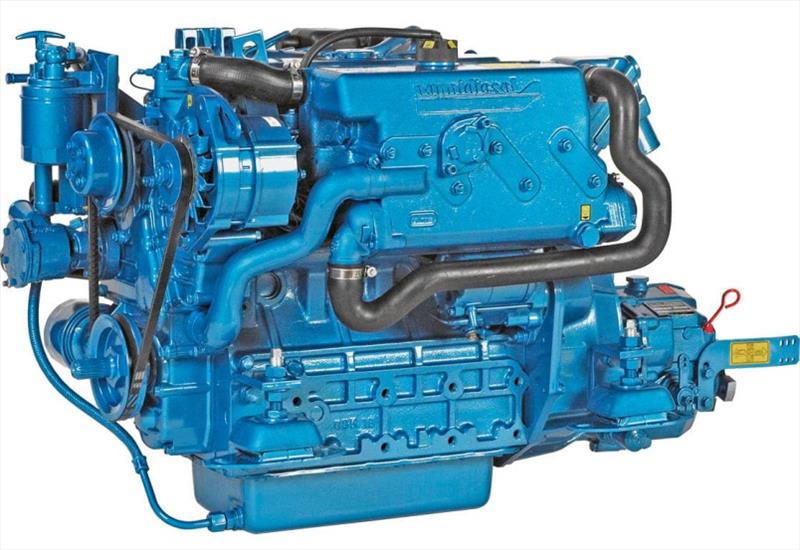
Global Solo Challenge: Solving problems with inboard diesel engines
by Global Solo Challenge 21 Aug 2021 17:31 AEST

A common 30hp sailboat inboard engine © Global Solo Challenge
To fully understand the operation of the inboard engine of a sailboat, you need to study at least the basic principles. Refer to the many resources available online, a short google search will bring up many results.
Alternatively, read a book that deals with the subject. In this article we will talk only about some of the more common problems you might face with an inboard sailboat engine. For other boats, the installations and types of engines are so varied that it cannot be easily summarised here. Here we will talk about the typical 15-40 horsepower marine diesel engine of boats between 8 and 16 meters.
Interestingly, most calls to the coast guard are related to inboard engine problems. This, despite the fact that marine diesel engines are quite simple in both construction and maintenance. Distracted owners however discover that there are so many things that can go wrong. Many owners treat the marine inboard engines as the engine of a car, confident that it is enough to turn the key. In reality these are not complex engines, on the contrary, they are infinitely simpler than those of a car. The marine environment, however, is hostile to everything mechanical or electrical. In addition, we use the car every day, the sailboat inboard engine is turned once in a while. During the winter it remains stationary for many consecutive months which can be damaging if we don't adopt the necessary precautions.
Common inboard sailboat engine problems
When you turn the ignition key (or push the button) I would say there are three common problems. Flat batteries, problems with the electrical system that powers the starter motor or problems with the starter motor.
Flat battery
Modern sailboat inboard engines cannot be started by hand so finding yourself with a discharged engine battery is equivalent to finding yourself without an engine. The starter battery should be completely separated from the services electrical system. A split charger or other similar solution should prevent you from accidentally discharging it. A voltmeter is enough to keep its state of charge under control, at rest with the engine off it should be around 12.6V.
A voltage below 12.2V is already a symptom of some problem with your system. You have to understand why the battery voltage drops after starting the sailboat inboard engine. It could be a dead battery that no longer holds the charge, it will need to be replaced immediately. Or you may find that someone has put their hands on the electrical system by connecting something to the engine battery that discharges it.
In some boats it is possible to put engine starter battery in parallel with the service batteries with a 1-2-both switch. You should never have the battery banks in parallel, and it is easy to forget it so always check and double check it. Only as a measure of last resort, if your starter battery is flat you can put it in parallel with your service batteries bank to try to start the engine. In fact, the services battery bank is usually much larger than the single engine start battery. Even at a lower state of charge the service bank can save us by providing enough power to start our inboard engine.
If putting battery banks in parallel is impossible, you should carry cables such as car cables with alligator terminals on board to be able to put banks in parallel in an emergency situation. On board some cruising boats there is an additional separate battery bank for the anchor windlass. Would you be able to put the windlass battery bank in parallel it with the engine battery in an emergency situation? Study your system and prepare the solution to this problem, so that you can easily intervene in case of emergency. Remember to disconnect the switch that puts the service batteries in parallel with the engine batteries, this still remains the most common human error.
Continue reading the article...